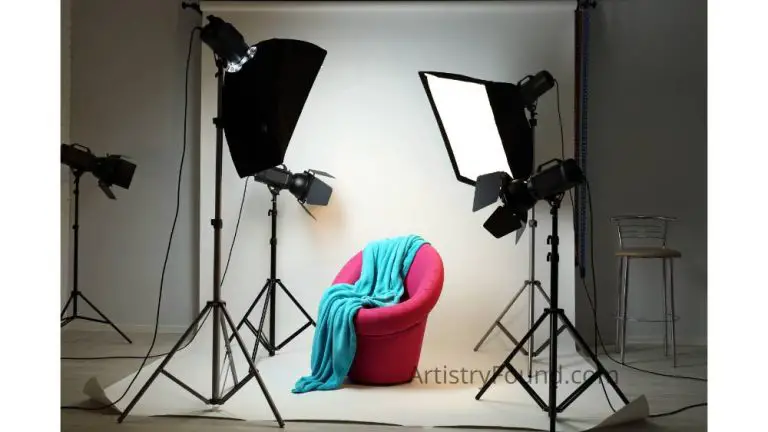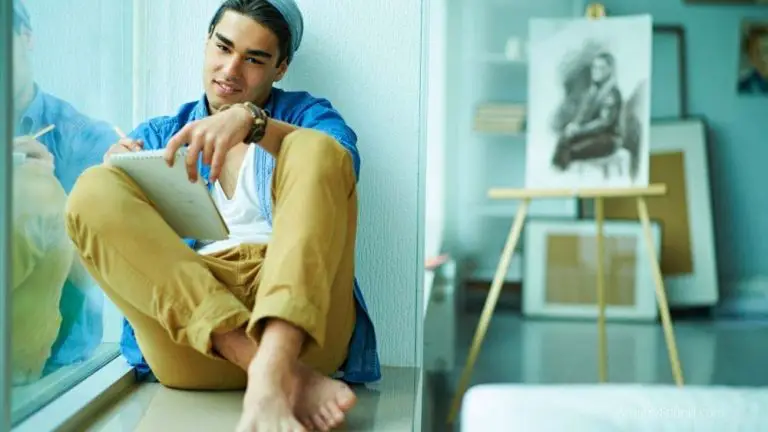Why Are Art Schools So Expensive? (Explained)
When considering a career in the arts, there is no doubt that a degree in an art-related major can help you stand out in a competitive industry. The problem is that art schools are expensive. When considering that the average price tag at these dedicated art institutions will be north of $90,000 for a 4-year degree—certainly higher than many entry-level arts-related professions make annually—you may be asking yourself: Why are art schools so expensive?
The main factors contributing to the steep price of art schools are the more-expensive-than-average facilities, the high costs of supplies for art students, and the lower-than-average enrollment. The combination of these factors requires art schools to charge more per student to be sustainable.
It is important to remember that even though the sticker price is high for art schools, few students end up paying full price. In fact, 72.2% of art students receive some form of financial aid, scholarship, or grant money. Nonetheless, even a portion of a $25,000+ yearly tuition bill can be daunting for prospective art graduates with no guarantees of lucrative career options, so it is important to have a detailed career plan in place before taking out student loans and enrolling in an expensive art school.

(This article may contain affiliate links and I may earn a commission if you make a purchase)
How Much Is Art School Tuition?
Before calling art schools exorbitantly expensive, let’s get one thing clear: all schools are expensive. While it remains to be seen how the recent shift to remote learning will ultimately impact the cost of higher education, students have been forced to live with the increasing cost of an expensive college for years, with even the price of an in-state public education approaching or exceeding $11,000 annually on average in most states.
Regular College Costs
| Type of College | Annual Tuition |
|---|---|
| State College (in- state residents) | $11,171 |
| State College (out-of-state residents) | $26,809 |
| Private College | $41,411 |
Keep in mind that these are college tuition costs only. The costs of living (housing, food, entertainment) are extra. Now let’s compare that to the annual tuition rates at a dedicated art school.
Art School Annual Tuition Rates
| Art School | Annual Tuition |
|---|---|
| Art Institute of Las Vegas | $17,316 |
| Savannah College of Art & Design | $37,575 |
| Art Center of Pasadena | $44,272 |
| San Francisco Art Institute | $45,664 |
| New York School of Visual Arts | $41,900 |
So while you can see that a regular state college is expensive in and of itself, an art school’s costs will be more on par with a typical private college, which has a significantly higher tuition fee.
Factors that Make Art School Expensive
Some of the factors that have caused the cost of an art education to spiral out of control include:
- Enrollment challenges as students increasingly look to online options or weigh whether college is even necessary for their chosen field
- Heavy investment in lavish campus facilities
- Housing and cost of living increases
While higher education costs are daunting across the board, the challenges mentioned above, along with a host of others, tend to hit art schools harder than most. Let’s look at some of the factors that are likely to make an art degree end up costing more than $200,000.
More Expensive Facility Needs Than Most Areas of Study
All schools need facilities such as classrooms, lecture halls, libraries—the list goes on. While art schools still need these basic facilities, they also have many other facility needs that “normal” institutions can get by without.
For example, they are likely to need a large amount of studio space and equipment to record and edit films, and plenty of high-end computers for graphic design, not to mention a campus that reflects the artistic nature of the school to name a few. The cost of these specialized facilities will be reflected in the student bill.
Need for Specialized Supplies
Increased tuition rates will also reflect the need for more specialized supplies required of an art student. An art student’s supply list is likely to go above-and-beyond that of a mainstream student. In addition to the standard textbooks, items such as personal sketchbooks, canvases, paints, and many other art supplies will be necessary depending on the field of study.
Art students may also have to pay for editing software for digital creations. And even while film and photography students may not have to buy their own cameras, they will definitely pay student fees to use the school’s equipment and help fund equipment upgrades.
Funding Income for Difficult-to-Find Faculty
It is often quipped that the only thing you can do with an art degree is teach art. So in that sense, it should be easy to find art professors, right?
While there may be some truth in this assumption, a schools’ ability to find and retain quality art professors is surprisingly difficult.
While many artists need to teach to pay their bills, the top celebrities in each field of art make enough in their discipline that teaching would be a significant inconvenience. This leaves art schools trying to balance the quality of an artist’s work and education versus popular perception and putting together a competent faculty that will draw aspiring artists’ attention.
What’s more, is that many artists tend to be more free-spirited than other types of professionals, so getting art professors that are willing to forego their own passion projects, put down roots, and work within the school’s curriculum year-after-year can be a challenging—and expensive—undertaking for art schools.
Art Schools Are Located in Expensive Cities
For artists, it is imperative to have patrons of the arts. As a result, most prestigious art schools are located in highly populated cities rich in culture, such as New York, Chicago, and San Francisco.
While trendy metropolitan areas will definitely have their niche populations excited to attend art school galas and theater productions, the cost of attaining these patrons is steep. Living in trendy cities in which many art schools call home can be substantially higher than those cities home to the local state schools.
Everything from finding a suitable place to live to coordinating transportation will be expensive, adding to the financial burden of the art student.
Fewer Students to Bring in Tuition
One of the hallmarks of a quality art school is having a low student-to-teacher ratio. After all, how could an art professor realistically take the time to appreciate and evaluate thousands of pieces of art per semester?
Therefore, while “regular” colleges can create economies of scale by putting assessments online and teaching to enormous survey courses, it doesn’t work with the art university model to simply add more students to a course to help lower the average cost per student.
While this intimate nature between the professor and his or her handful of pupils in the class makes the art school experience unique, the costs of running an institution remain a reality, with fewer overall students required to foot the bill.
Art School Costs: Bachelor of Fine Arts vs. Bachelor of Arts
When looking to aquire a secondary degree in art, there are two degrees you can obtain: a Bachelor of Fine Arts (BFA) or a Bachelor of Arts (BA). While these two degrees may seem like the same thing, there are important distinctions between the two.
Bachelor of Fine Arts (BFA)
A BFA is a more art-intensive degree pursued by those students who are serious about making a career in an arts-related field. There will be few liberal arts or general education courses included in this degree program, with students being heavily immersed in the arts from the moment they enroll. Graduates holding a BFA are seen as serious artists by those in the industry.
Not all schools will offer BFA programs. This is where a school with a dedicated art program comes in. Schools known for a strong art emphasis, such as Yale University, or schools dedicated exclusively to the arts, such as the California Institute of the Arts, are the types of institutions that will offer a BFA. Therefore, it will be the more expensive degree to obtain.
Bachelor of Arts (BA)
A BA is more of a general degree pursued by students who have an interest in art. This degree program will include many liberal arts courses such as history, literature, and math, with specialization in art only intensifying as the student nears graduation. Students usually pursue this type of bachelor’s degree as part of a double major with something else.
Most state and private colleges will offer a BA in art or art history regardless of their overall commitment to the arts. This can be a more affordable option for students looking to continue their study of art, but as mentioned, this degree is not taken as seriously in the industry as the BFA.
How Much Can You Make With An Art Degree?
We can’t have a proper discussion about the costs of art school without considering your prospects after you’ve left school. Here are the median incomes of careers that could benefit from an art degree.
| Job Title | Median Annual Income |
|---|---|
| Multimedia Artist | $75,270 |
| Industrial Designer | $68,890 |
| Art Director | $94,220 |
| Producer/Director | $74,420 |
| Graphic Designer | $52,110 |
| Video Editor | $63,780 |
| Art Curator | $54,570 |
| Artist | $48,760 |
Take a look at the table above to get an idea of the median annual salaries of several jobs in the art field. There are certainly more job titles than just these, but this will help give you an idea of the pay level you can obtain from a career in the arts. Notice where “artist” falls on the pay scale.
Are Art Schools Worth It?
Considering the high costs and difficult job prospects, you may want to know if going to art school is worth it or not?
Attending a dedicated art school is worth the cost if you want a high-end career in an art related field. While the cost of art school is substantial, the expense can be worth it if the annual salary of the job title your are aiming for is substantial as well.
In other words, going into student loan debt to attend an art school only to have a low paying job in the end certainly isn’t worth the cost. However, looking at the few examples in the table above, you can see there are several job titles in the arts that would be worth the cost of tuition.
So if you’re looking for a career in the art world with a specific title (Art Director, Video Editor, Art Curator, etc.), you would do well to go to art school. These are all commercial fields with large businesses having need for people with these specific qualifications.
If your desire is to be a “true artist” and focus on your own works of art, you may want to consider carefully before heading to an expensive art school. While independent artists can certainly do quite well, there is a reason why there are many running jokes about being a “starving artist”.
Conclusion
It is no secret that the cost of higher education has gotten extravagant, with a variety of factors leading to students bearing the financial burden.
However, in addition to these cost-related-challenges, art schools tend to be even more expensive than standard colleges, with higher-than-average facilities and supply costs and lower-than-average enrollment.
This leads to the high costs of running the school being distributed over a much smaller population of students. This can make the total cost of art school steep, giving potential students a lot to think about before enrolling in art school.




![Why Art Schools Hate Anime [Solved!] 4 Why art schools hate anime.](https://artistryfound.com/wp-content/uploads/2021/06/Why-Art-Schools-Hate-Anime-Solved-01-768x432.jpg)



